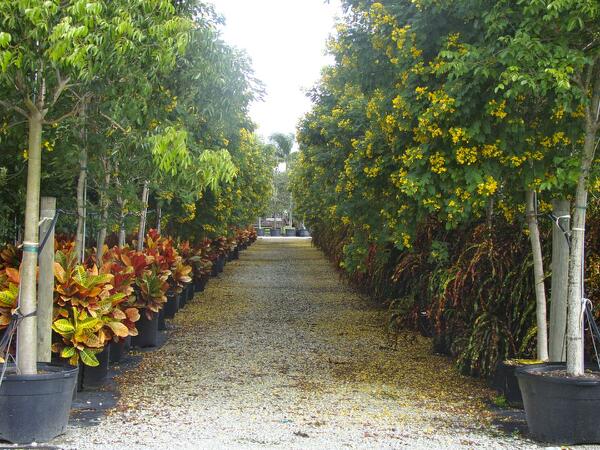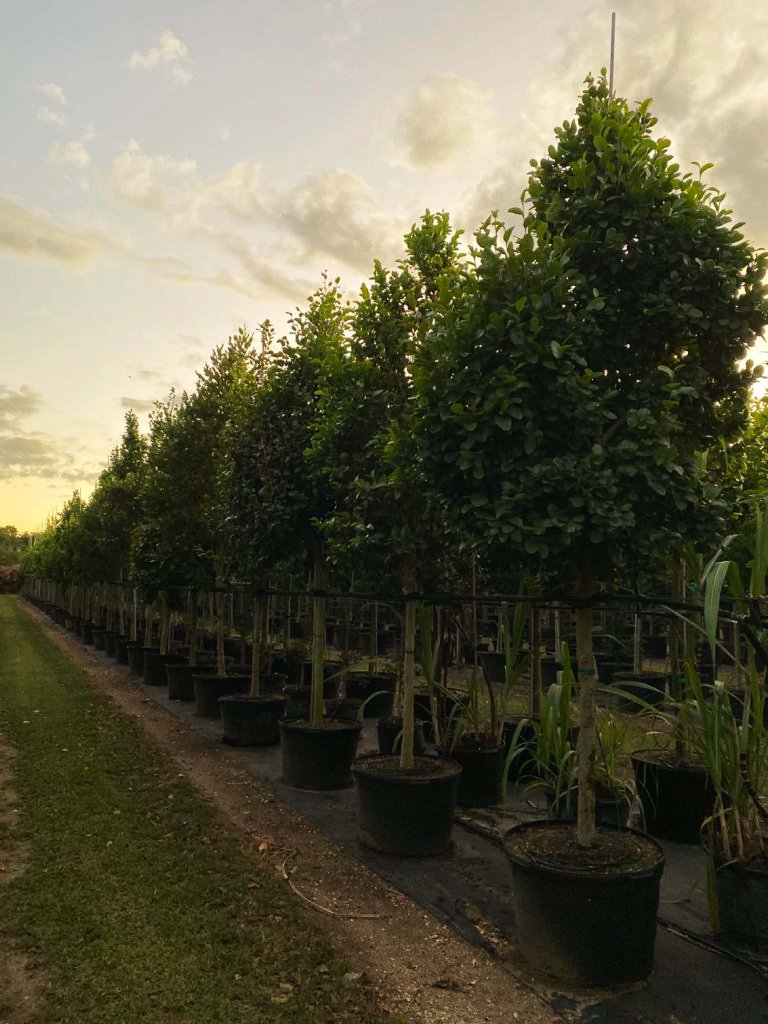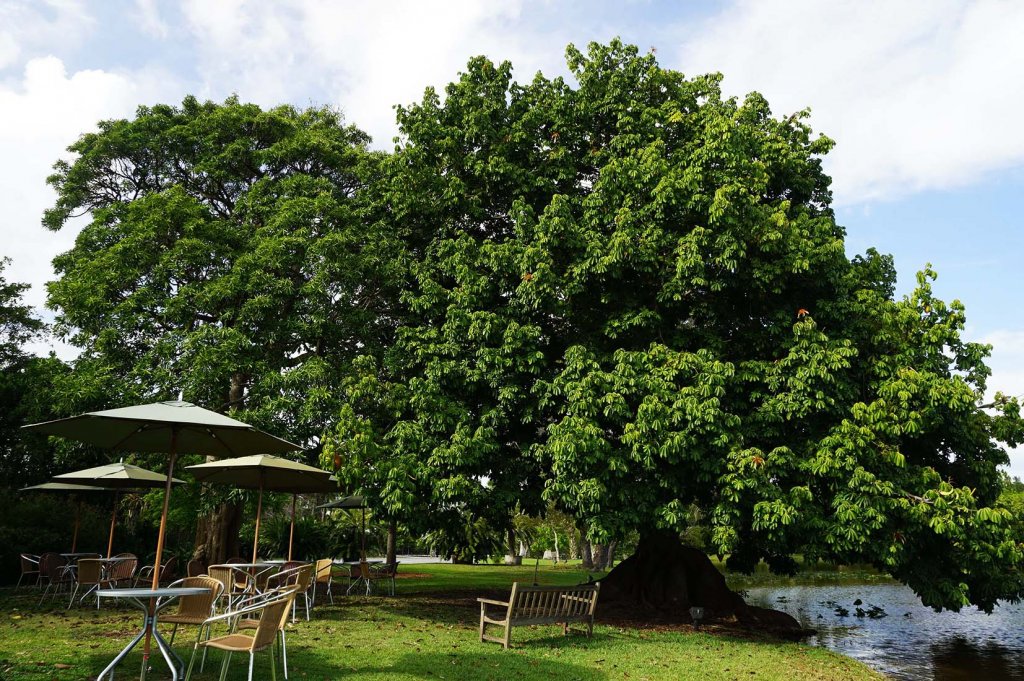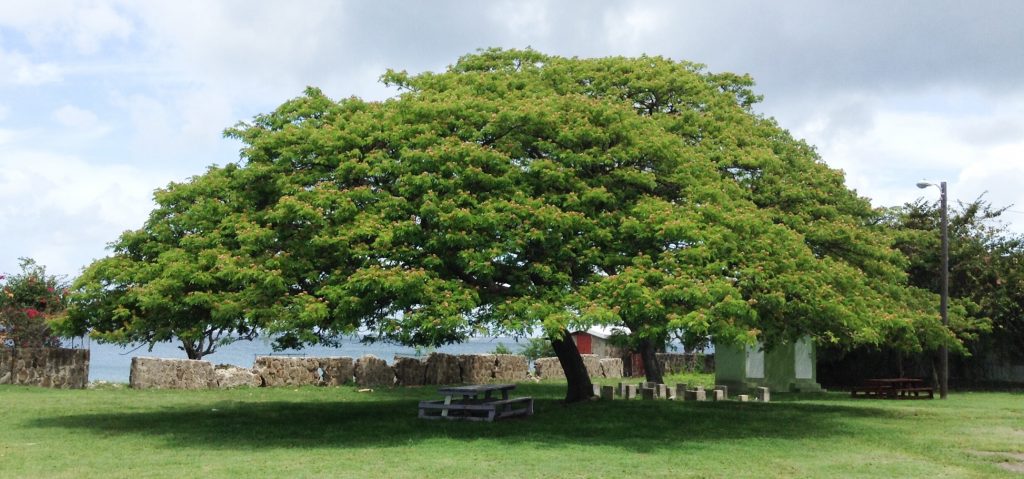It’s very important to know how trees affect air quality directly and indirectly and how natural forests, along with ornamental urban trees and shrubs, affect air quality by altering the atmospheric environment. Their effect on the environment is related to the removal of air pollutants and particulate matter from the atmosphere, photosynthetic byproduct output of oxygen and reduction of local air temperatures. Leaves have a primary function in all three cases.

Landscape Planning

Pigeon Plum Tree Row

Ceiba Pentandra Specimen also known as Kapok
How do trees reduce pollution? Trees remove gaseous air pollutants from the atmosphere by uptake through leaf stomata or absorption through other surfaces. Additionally, gases taken into the leaf defuse into intercellular spaces, combine with water and form acids, or react with internal leaf structures. Carbon dioxide is one of the gases leaves take up, and it represents the major component of photosynthesis; the food-making engine of the tree. Consequently, oxygen is a byproduct of photosynthesis and its release from trees improves air quality. Due to this approximately a single large tree can absorb 10 pounds of air pollutants per year and produce some 260 pounds of oxygen.
Also, trees transpire water vapor through the leaf stomata, contributing to the atmospheric water content. Intercepted airborne particles may be absorbed into the tree, or they adhere to plant surfaces and are later washed to the ground by rain.
How Trees Affect Air Quality Indirectly: Lowering Global Temperature

Specimen – Samanea Saman
Trees clean the air – but there’s more. Additionally, with the presence of trees, local temperature lowers. Because, not only do they provide shade from direct sunlight; but of transpiration, which takes up almost 80% of the cooling effect. Taking up latent heat from the leaf surface and cools the surrounding air. This is nature’s version of the evaporative coolers used for air conditioning in desert regions. Shading the ground surface from the direct rays of the sun reduces soil temperatures and contributes to the cooler temperatures.
Studies in the middle latitudes in summer, have shown that below small groups of trees over grass; mid-day temperatures are about 1 degree cooler than in adjacent open areas. By reducing air temperatures, trees indirectly reduce pollution and improve air quality; because the rate of pollutant emission and ozone formation are temperature dependent.Both decreasing with lower air temperatures. Also, trees impact local atmospheric conditions by reducing wind speed and turbulence.
Do trees help with air pollution? Trees vs. Air Pollution
Several factors come into play when considering the local effects of trees on air pollution. In natural forests, and urban settings, tree size and the density of plantings together determine the magnitude of positive impact on air quality. In tropical and subtropical regions, as well as high latitude boreal forests, where evergreen species predominate, trees provide a year around benefit to air quality. However, in middle latitude regions of deciduous forests and ornamental trees, the effect is only present during the in-leaf season. The overall positive effects of tree are significant on a global basis.
Maintaining natural forests is the most important strategy to improve overall air quality on a global scale. As a result, trees and clean air mix very well: ornamental tree growth in urban environments has been shown to improve local air quality. In order to accomplish air purification through trees, we need to know how trees affect air quality directly and indirectly so we can implement policies to increase the numbers of large healthy enviroments. Definitely, planting such trees in polluted or heavily populated urban areas will come as a great benefit.


